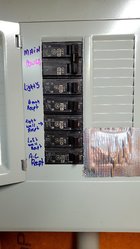My local mentor, whom I met through our mentor list, had me over to his shop recently for a bowl-turning lesson on his One Way 16/40. I was blown away by the stability, power and precision of this fine machine. There was/is just no comparison to my Laguna 12/16. And though my reaching out to him has sparked a revival in his own turning pursuits, he acknowledged to me yesterday on a visit to my shop that at almost 90, he will have to sell it at some point in the future. And while I am not trying to take advantage of his age-related decline, obviously, I would like to own such a dream lathe if he indeed has to sell it.
But I have some logistical questions for you experienced lathe buyers and movers:
1. It is a 700 pound machine. How to move it through two backyards, and up a couple of steps into my shop? I'm a wimpy, 55-year old English teacher with back issues. Can you hire a moving service to do something like this? I would think it would be worth it, as I would no doubt spend much more on chiropractor visits if I tried it myself.
2. Once I get it into my shop, should I put the legs on heavy plywood or other surface? My floor is plywood floor-boards in one of those barn-style shops I had built on site, so concerned about even weight distribution.
3. If I read the specs correctly, this model has a 2hp motor wired for 220, which I don't have. I am not an electrician, but I know a good one (whose daughter I taught). Is it feasible to re-wire my electrical feed in the shop, or at least one line, to 220?
I'm sure there are things I'm not thinking about here, and this would be a big investment for a hobby-level turner. Any and all advice is appreciated. Aaron
But I have some logistical questions for you experienced lathe buyers and movers:
1. It is a 700 pound machine. How to move it through two backyards, and up a couple of steps into my shop? I'm a wimpy, 55-year old English teacher with back issues. Can you hire a moving service to do something like this? I would think it would be worth it, as I would no doubt spend much more on chiropractor visits if I tried it myself.
2. Once I get it into my shop, should I put the legs on heavy plywood or other surface? My floor is plywood floor-boards in one of those barn-style shops I had built on site, so concerned about even weight distribution.
3. If I read the specs correctly, this model has a 2hp motor wired for 220, which I don't have. I am not an electrician, but I know a good one (whose daughter I taught). Is it feasible to re-wire my electrical feed in the shop, or at least one line, to 220?
I'm sure there are things I'm not thinking about here, and this would be a big investment for a hobby-level turner. Any and all advice is appreciated. Aaron

